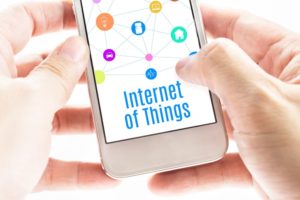The Future of Healthcare Marketing and Digital Dominance
 [Part of a continuing series] A colleague told the real-world story about seeing a group of senior citizens talking about their grandchildren. To our observer, the curious part was that each of the 70-plus-year-old grandparents had their smartphone in hand, complete with proud-moment pictures and videos. This snapshot is a micro-moment reminder of how personal adoption of technology is changing…rapidly. And this impacts medical marketing to older Internet users.
[Part of a continuing series] A colleague told the real-world story about seeing a group of senior citizens talking about their grandchildren. To our observer, the curious part was that each of the 70-plus-year-old grandparents had their smartphone in hand, complete with proud-moment pictures and videos. This snapshot is a micro-moment reminder of how personal adoption of technology is changing…rapidly. And this impacts medical marketing to older Internet users.
As recently as five years ago, the senior-with-a-smartphone image would have been a rare encounter. Now, Americans age 65 and older account for 15 percent of the US population. And the US Census Bureau projects, that by 2050, 22 percent of Americans will be 65 and older. “Pew Research Center surveys find that seniors are also moving towards more digitally connected lives.

“Around four-in-ten (42 percent) adults ages 65 and older now report owning smartphones. Internet use and home broadband adoption among this group have also risen substantially. Today, 67 percent of seniors use the Internet…and for the first time, half of older Americans now have broadband at home.”
Digital dominance is more than just seniors…
Marketing planners are solidly aware that Millennials—the largest demographic—are “digital natives.” These are people who have always known computers, the Internet and digital technology as part of their lives. Millennials are accustomed to, and typically expect, the immediacy, convenience and connectivity that flows from the Internet standard of living and lifestyle.
But the reach of technology (and the importance of digital and Internet marketing) is now pervasive in society. “The internet represents a fundamental shift in how Americans connect with one another, gather information and conduct their day-to-day lives.” [Pew Research Center Fact Sheet]
And the in-your-pocket device of choice is mobile. “Roughly three-quarters of Americans (77 percent) now own a smartphone," Pew reports. “Smartphones are nearly ubiquitous among younger adults, with 92 percent of 18- to 29-year-olds owning one. Nearly seven-in-ten Americans now use social media. Today, 69 percent of US adults are social media users…especially popular among younger adults (86 percent of 18- to 29-year-olds). Plus a majority of 30-49 (80 percent) and 50-64 (64 percent) use social media as well."
Digital dominance is also everything else…
Nearly 20 years ago, MIT technologist Kevin Ashton coined the term “The Internet of Things” (IoT) broadly meaning how technology connects society. Everyone has a smartphone and/or tablet, but marketing minds are tracking the connectivity of home appliances, thermostats, voice-activated personal assistants and a zillion home and office devices large and small.
Technology has achieved major strides in the tools of hospitals, doctors and providers. But marketing savvy innovators are also keeping pace with telehealth connections, doctor-recommended wearables and health monitoring sensors, fitness and wellness trackers (for people, pets and other critters). Pew observes that the Internet of Things is rapidly expanding, “tying machines to machines and linking people to valuable resources, services and opportunities.”
What’s more, the well-connected modern world is nearly inescapable (or maybe it already is so). “Today, 49 percent of the world’s population is connected online and an estimated 8.4 billion connected things are in use worldwide.”
The future of the IoT envisions several major themes of connected life, reports Pew. Marketing-smart visionaries and planners recognize that “People crave connection and convenience, and a tech-linked world serves both goals.” The Millennial mindset champions these ideas, and “as life increases in complexity, convenience is the default setting for most people. And “the always-online younger generation can’t imagine being anything but connected.”
Marketing planners need to recognize that, in the near future, “the infrastructure of everyday life will be networked. How does one ‘disconnect’ from your home, city, airport or health care system?” The Pew Research Center observes, “If today’s adults don’t get more connected, the next generation will. To today’s 10-year-old, the idea of a watch that can’t take basic health information is like a 20-year-old trying to understand what the hell a cassette tape is.”








